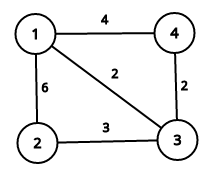Description
Little Mishka is a great traveller and she visited many countries. After thinking about where to travel this time, she chose XXX — beautiful, but little-known northern country.
Here are some interesting facts about XXX:
- XXX consists of n cities, k of whose (just imagine!) are capital cities.
- All of cities in the country are beautiful, but each is beautiful in its own way. Beauty value of i-th city equals to ci.
- All the cities are consecutively connected by the roads, including 1-st and n-th city, forming a cyclic route 1 — 2 — ... — n — 1. Formally, for every 1 ≤ i < n there is a road between i-th and i + 1-th city, and another one between 1-st and n-th city.
- Each capital city is connected with each other city directly by the roads. Formally, if city x is a capital city, then for every 1 ≤ i ≤ n, i ≠ x, there is a road between cities x and i.
- There is at most one road between any two cities.
- Price of passing a road directly depends on beauty values of cities it connects. Thus if there is a road between cities i and j, price of passing it equals ci·cj.
Mishka started to gather her things for a trip, but didn't still decide which route to follow and thus she asked you to help her determine summary price of passing each of the roads in XXX. Formally, for every pair of cities a and b (a < b), such that there is a road between aand b you are to find sum of products ca·cb. Will you help her?
The first line of the input contains two integers n and k (3 ≤ n ≤ 100 000, 1 ≤ k ≤ n) — the number of cities in XXX and the number of capital cities among them.
The second line of the input contains n integers c1, c2, ..., cn (1 ≤ ci ≤ 10 000) — beauty values of the cities.
The third line of the input contains k distinct integers id1, id2, ..., idk (1 ≤ idi ≤ n) — indices of capital cities. Indices are given in ascending order.
Print the only integer — summary price of passing each of the roads in XXX.
4 1
2 3 1 2
3
17
5 2
3 5 2 2 4
1 4
71
This image describes first sample case:

It is easy to see that summary price is equal to 17.
This image describes second sample case:

It is easy to see that summary price is equal to 71.
题意:给你一些城市,有些城市是省城,与其他城市都会相连。一般的城市就是 1 — 2 — ... — n — 1这种连接方式,求连接城市相乘积的和。
解法:为了防止重复计算,首先考虑的就是省城的连接,我们先保存所有连接点的和,然后就是 a(省城)*(sum-a(省城)),每计算一次,sum就减一次省城的权值
接下来再考虑一般城市连接,已经计算过的不去考虑,注意一下1和n的情况
#include <bits/stdc++.h>
using namespace std;
int n,m;
long long q[100005];
long long p[100005];
long long ans1[100005],ans2[100005];
map<int,int>c;
set<long long>e;
long long sum=0,ans=0;
long long cot;
int main()
{
cin>>n>>m;
int a,b;
for(int i=1; i<=n; i++)
{
cin>>q[i];
sum+=q[i];
}
for(int i=1; i<=m; i++)
{
cin>>p[i];
c[p[i]]=1;
}
if(c[1]==0&&c[n]==0)
{
ans+=(q[1]*q[n]);
}
for(int i=1;i<=m;i++)
{
sum-=q[p[i]];
ans+=(q[p[i]]*sum);
}
for(int i=1;i<n;i++)
{
if(c[i]==0&&c[i+1]==0)
{
ans+=(q[i]*q[i+1]);
}
}
cout<<ans<<endl;
return 0;
}